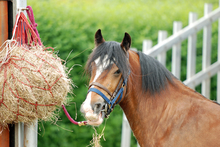With horse care and ownership comes a price and it typically comes in the form of money! Whether you have one horse or many horses or are thinking about getting into horses, the conversations you have with horse folk all tend to center around what it takes to care for their horses.

Costs of feeding and caring for your horse
Factors attributed to fluctuating needs of horses include a change in environment, injury, illness or disease, stress, weaning, breed, pregnancy and aging.
In numbers, the annual cost of taking care of a horse in the Alberta, Canada, area comes in at $1,256 Minimum.
It is a fact that horses at different stages of their lives, careers and in different seasons will have different needs. For example a retired horse’s needs are different than that of a performance horse and both differ from a mare in foal. All horses’ necessities differ between summer and winter months and with added or reduced activity levels.
Factors attributed to fluctuating needs include a change in environment, injury, illness or disease, stress, weaning, breed, pregnancy and aging. Regardless of what situation your horse is currently in, there is an obligation to ensure horses are fed adequately but without breaking the bank.
According to the Alberta Animal Protection Act, animal care duties state:
A person who owns or is in charge of an animal must ensure that the animal has adequate food and water, must provide the animal with adequate care when the animal is wounded or ill, must provide the animal with reasonable protection from injurious heat or cold, and must provide the animal with adequate shelter, ventilation and space.
To elaborate, horse feed should be wholesome, palatable and free from contamination and should be fed at least once a day. Horses require unrestricted access to adequate, uncontaminated drinking water.
Some of the basic principles used when feeding horses are:
- Good quality hay or forage should be the foundation of all equine feeding programs.
- Horses are grazers by nature. If grazing is unavailable, feed smaller amounts but more often.
- Provide free choice salt, mineral supplementation and clean water at all times.
- Manage feed intake of horses individually. Segregation may be needed for specific needs.
- Overfeeding and related problems are more common than underfeeding.
- Spring pasture growth is more nutrient rich than summer or fall. Winter grazing has limited nutrition.
- Mature or aging horses tend to get fat on good pasture so pasture may need to be restricted.
- Concentrates are used to increase calories in the diet and are not the norm. Adjust according to energy requirements.
- A consistent routine of parasite control and vaccinations is essential to supporting a healthy feed regimen.
This routine complimented by quality farrier & veterinary consultation or visits should safeguard your horse from a variety of issues and/or illnesses
So what does feeding a horse look likes so far in 2012?
What Alberta is experiencing in 2012 is a fluctuation in forage prices due to quality of hay, not a shortage of quantity. Weather affects crop quality and so with unpredictable weather comes varying quality of hay. Hay markets are regional, typically encompassing about a 100km radius.
Outside of that area, your hay price should increase due to the cost of transport. As such, some areas of Alberta will have a better yield if they get rain in the beginning of June, some will have lesser quality of hay if it’s cut and subsequently rained on and some will not produce if a hail storm has damaged a crop. Some hay, if newly planted, will have a better first couple of years than when its 7-8 years old. This explains why some crops within close proximity can be doing great while others do not.
The current trends for feed grain prices in Saskatchewan and Alberta are staying steady or are on the rise. The prediction is that grain prices are expected to increase in the last quarter of 2012. This is due in part to drought conditions in many key crop regions in the United States.
This means that low yields will increase demand and in turn mean higher prices to the consumer. If you are feeding concentrates to your horses, explore some alternatives to oats and sweet feed, for example beet pulp and/or barley.
Evaluating which horses truly need concentrates is essential and is usually based on the horses body condition score. If possible, when feeding hay, use a trough or feeder to minimise wastage. Have your hay tested to see if you require supplementation or if the hay you are feeding will maintain your horse’s body condition.
If pasture is a viable option then use it to enhance your feeding regimen. To reduce rapid consumption and waste when feeding concentrates, feed in a trough with many compartments or a tub containing large, smooth rocks.
Ultimately, a horse’s physiology is designed to move, eat and eliminate waste. Managing these facets of a horse’s make-up is part of what responsible horse people do every day.
Horse care is an ongoing commitment that brings about all walks of like and differing practices. Finding the most cost effective and appropriate program that works for your unique situation is key.
Information for news report: Finances and Forage By: Heather Mitchell-Matheson
